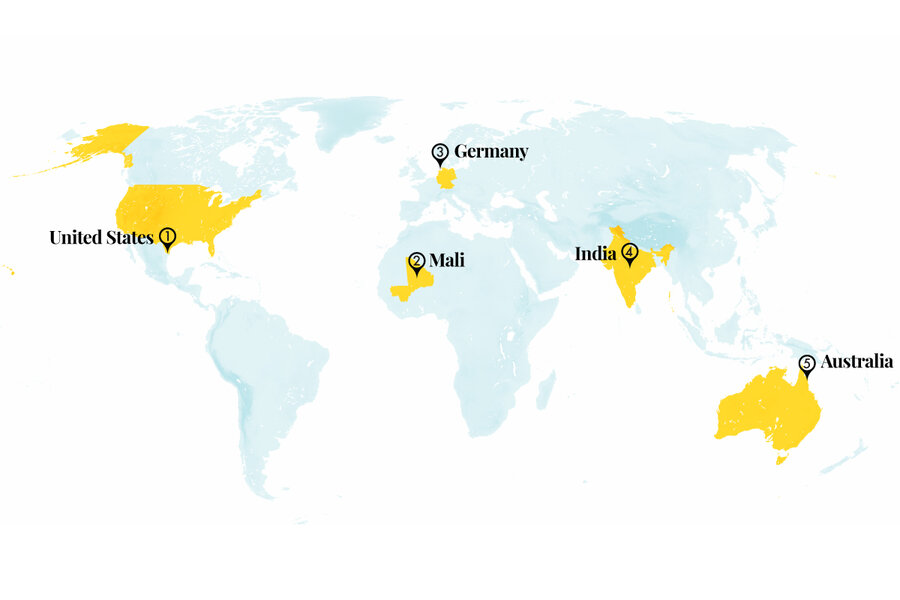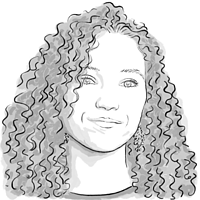New views: What makes a top US college, and the significance of Timbuktu
Loading...
1. United States
A Texas university offers a model of affordability that is boosting economic mobility. The University of Texas Rio Grande Valley serves a student body that is 90% Hispanic and made up primarily of first-generation college students. Over 60% of students qualify for federal Pell Grants, awarded to those with high financial need. Additional funding is provided by the state, and UT Rio Grande Valley has its own program that helps cover cost gaps. The majority of students pay no tuition or fees; the average cost to attend was $917 in 2019-20, compared with $7,907 for UT Austin.
“There are a lot of institutions that aren’t featured in mainstream media that are serving students extremely well,” said Michael Itzkowitz, who wrote a recent Third Way report on higher education and economic mobility. The team studied 1,320 U.S. institutions using an index that combines factors like post-enrollment earnings, the average net price of attendance, and percentage of Pell Grant recipients.
Why We Wrote This
A story focused onOur progress roundup highlights the dignity of people by challenging old ways of thinking, starting with a new college rating system that values how well schools set up disadvantaged students for success. And a massive project to digitize 40,000 documents from Mali demonstrates centuries of West African scholarship.
UT Rio Grande Valley ranked among the top five schools offering economic mobility, alongside California State University, Los Angeles; California State University, Dominguez Hills; Texas A&M International University; and California State University, Bakersfield.
Source: Washington Monthly
2. Mali
Tens of thousands of precious manuscripts saved from Timbuktu are now available to all, offering a window into a rich history of African scholarship. The texts, which range from legal, spiritual, and scientific writings to travel diaries and correspondence, were smuggled out of the city when jihadis took over in 2012 and burned countless other manuscripts. Following an intensive process of preserving, categorizing, and digitizing, over 40,000 pages of the texts are now accessible to anyone via Google Arts & Culture.
The writings show that scholars from Timbuktu used mathematics before scientists on other continents and figured out that the Earth rotates around the sun in a similar time period as Galileo. “Africans knew how to write before many outside Africa did,” said Andogoly Guindo, Mali’s minister of culture. “These manuscripts can throw light on part of Africa’s past.” Few scholars have the language know-how, so only a fraction of the documents are being translated – for now.
Source: The New York Times
3. Germany
The world’s first recyclable wind turbine blades are spinning at a German wind farm. The blades of a wind turbine measure around 170 feet long and are generally designed to be replaced every 20 years. As wind energy expands, experts estimate that over 2 million tons of blade material will be decommissioned each year by 2050.
Siemens Gamesa’s recyclable blades were developed in Denmark and recently installed on turbines at a 342-megawatt wind farm in the German North Sea, off the coast of the island of Heligoland. The resin, fiberglass, wood, and other materials used to make the blades can be separated with a mild acid solution and reused for other products such as suitcases or flat-screen casings.
Sources: Electrek, Scientific American
4. India
India’s gender ratio has begun to normalize as sex selection falls. Families are less likely than before to use abortions to prevent the birth of daughters, according to new data from the country’s National Family Health Survey. The data shows a reduction in the sex ratio to 108 boys for every 100 girls, compared with the natural rate of 105 to 100. This follows a peak of 111 boys in 2011.
Sex selection became a problem in the 1980s, when prenatal gender testing became widespread and affordable. Government efforts such as a ban on prenatal sex tests and a “Save the Daughter, Educate the Daughter” (Beti Bachao Beto Padhao, or BBBP) advertising campaign begun in 2015 worked to curb a preference for boys, which is prompted by financial and cultural incentives for some families. The Ministry of Women and Child Development recently asked Parliament to shift away from ads and devote more BBBP funds to girls’ health and education.
Sources: Pew Research Center, The Indian Express
5. Australia
Coral cover has reached the highest level on record in two-thirds of the Great Barrier Reef. Hard coral cover, an indication of reef health, has grown from 27% to 36% in the northern region and from 26% to 33% in the central region since 2021, the highest levels since data was first recorded 36 years ago. Home to over 5,000 species, the reef has been hit hard by periodic widespread bleaching events since 1998. But growth shows that some recovery is possible following the most intense disturbances, notably the underwater heat waves in 2016-17.
In the southern parts of the reef, however, coral cover has shrunk by 4% since last year due to a population outbreak of crown-of-thorns starfish. Peter Mumby, chief scientist of the Great Barrier Reef Foundation, and his team are working to predict how reefs respond to climate change, and how their management can “take us on a better path.”
Sources: CNBC, The Guardian, Australian Institute of Marine Science











